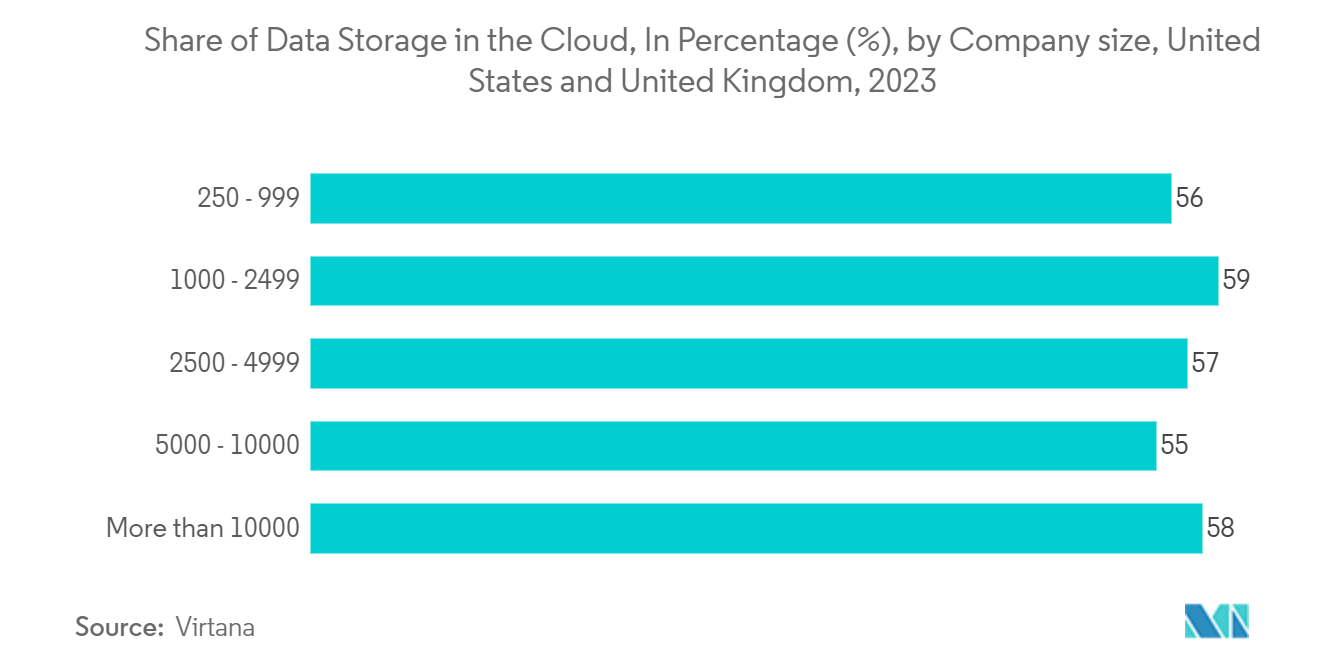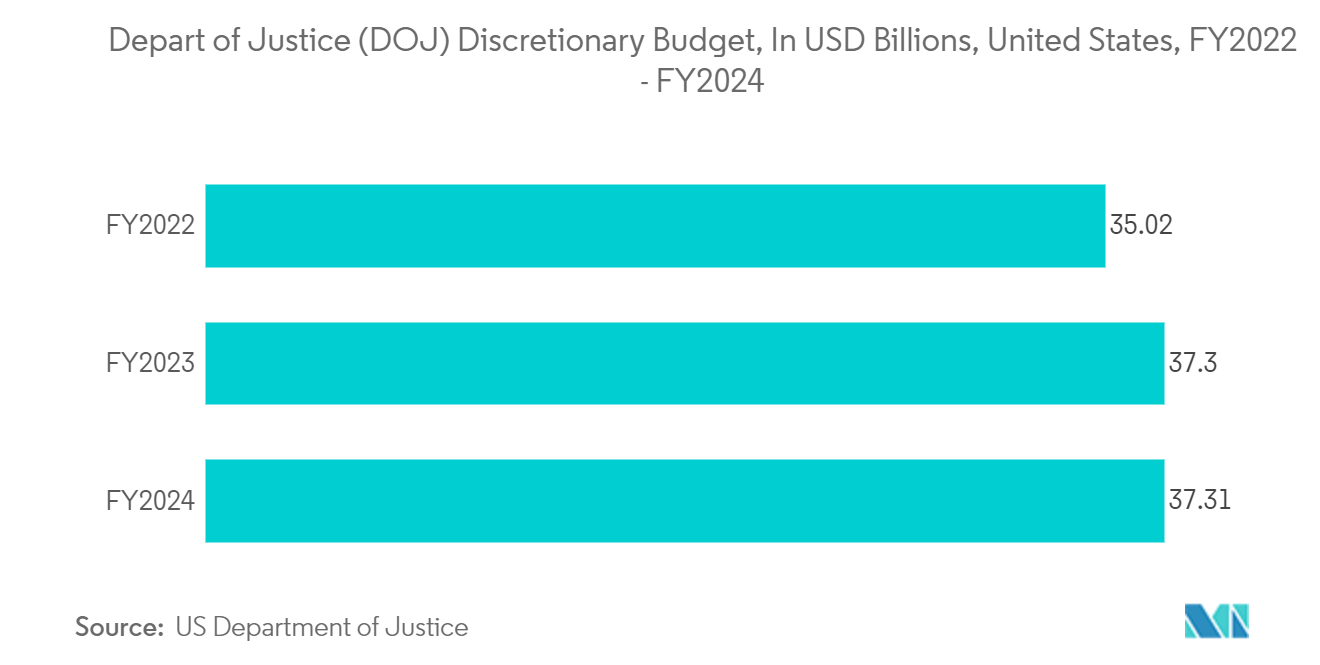Market Trends of United States Surveillance Storage Industry
Cloud Storage Segment to Witness Substantial Growth
- The rising use of high-definition cameras is leading to a surge in video data, highlighting the need for scalable storage solutions. Cloud storage emerges as a critical solution, offering the advantage of flexible capacity expansion without substantial initial hardware investments.
- Findings from a Virtana survey involving 350 IT professionals from the U.S. and U.K. underscore that a significant number of companies (~58% having employee size of more than 10,000) rely on cloud storage. More than half of their data is stored on cloud servers. A similar trend is observed among smaller organizations as well.
- Organizations are shifting to cloud storage to reduce capital expenditures associated with traditional storage systems. This transition allows for predictable operational costs through subscription models, making budgeting easier. Many cloud storage providers are gaining popularity due to their capability to meet the specific needs of surveillance systems.
- For instance, Wasabi is known for its Surveillance Cloud, which offers scalable and secure storage solutions tailored for video surveillance. The straightforward pricing model makes it an attractive option for businesses managing large volumes of video data efficiently. Many other companies are offering similar plans.
- As cyber threats grow, cloud providers enhance security measures, such as multi-factor authentication and encryption, to protect sensitive surveillance data. This focus on security is driving confidence in cloud solutions.
- For instance, according to Microsoft Corporation, the company detects about 1.5 million daily attempts to compromise its systems. The company invests billions in cloud security each year. According to the AWS Economic Impact Study (EIS) released on October 2023, Amazon Web Services stated that since 2011, it has invested over USD 108 billion in its cloud computing infrastructure in the United States.

Government and Defense Sector is Driving the Market
- The government and defense sectors are broadening their surveillance networks, encompassing public areas, vital infrastructure, and defense sites. This expansion results in a surge of video data, demanding extensive, high-capacity storage solutions.
- These sectors are increasingly partnering with private tech entities, such as IBM, Dell Technologies, and Amazon Web Services (AWS), to pioneer and implement sophisticated surveillance storage solutions. These collaborations infuse government projects with state-of-the-art technology and specialized knowledge.
- The US's macroeconomic conditions have been conducive to market growth, buoyed by heightened government spending on public safety. Notably, the US government allocated a substantial budget of over USD 37 billion for the Department of Justice in FY2025, which marks a consecutive increase over previous years, underscoring its commitment to security initiatives and setting a positive trajectory for the surveillance storage market.
- Under the USD 1.9 trillion American Rescue Plan, the US government allocated USD 15 billion specifically for public safety initiatives. A recent report highlights a notable drop in crime rates nationwide, attributed to the increased focus on public safety.
- Research by the Criminal Council of Justice revealed a 10% decrease in homicides across the 32 cities studied in 2023 compared to 2022. While some towns reported declines in violent offenses, gun assaults, and property crimes, there was a notable uptick in motor vehicle thefts, violent offenses, and carjackings.
- State and local governments increasingly invest in surveillance systems to enhance public safety. Cities like San Francisco and Chicago are investing heavily in smart city initiatives. The US Customs and Border Protection uses AI-powered border security surveillance systems, which generate daily terabytes of data that must be stored and analyzed. These developments are further driving the market.


